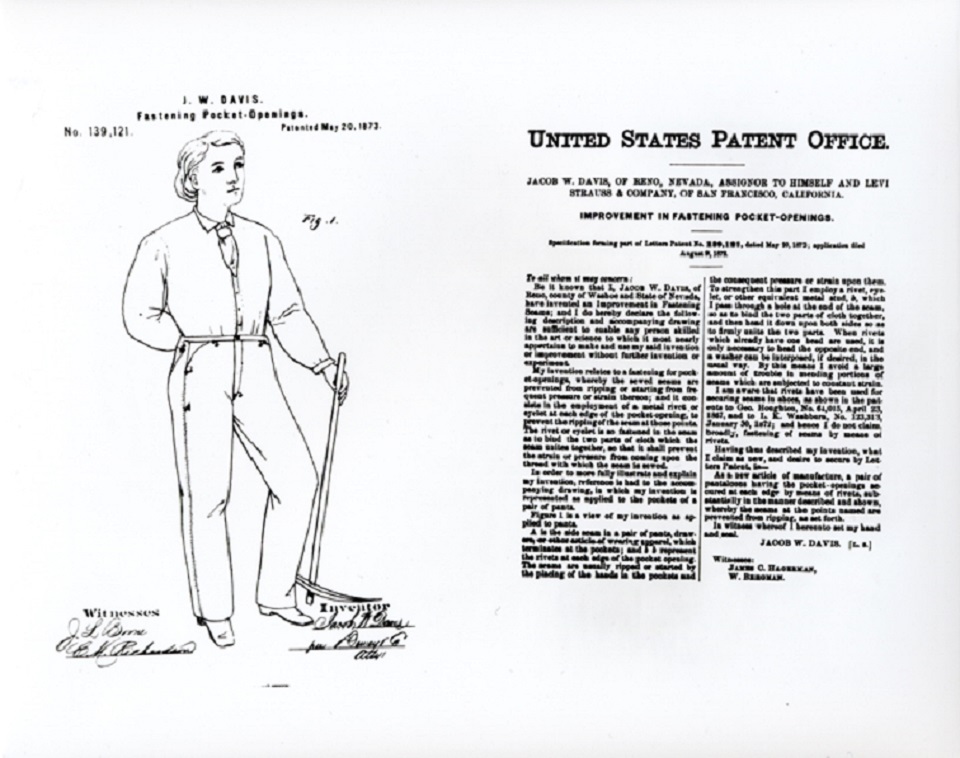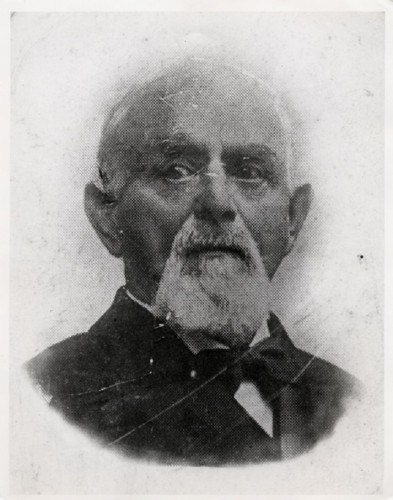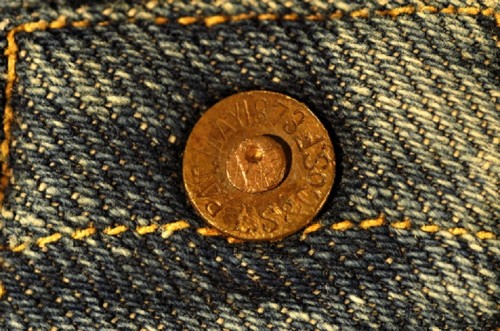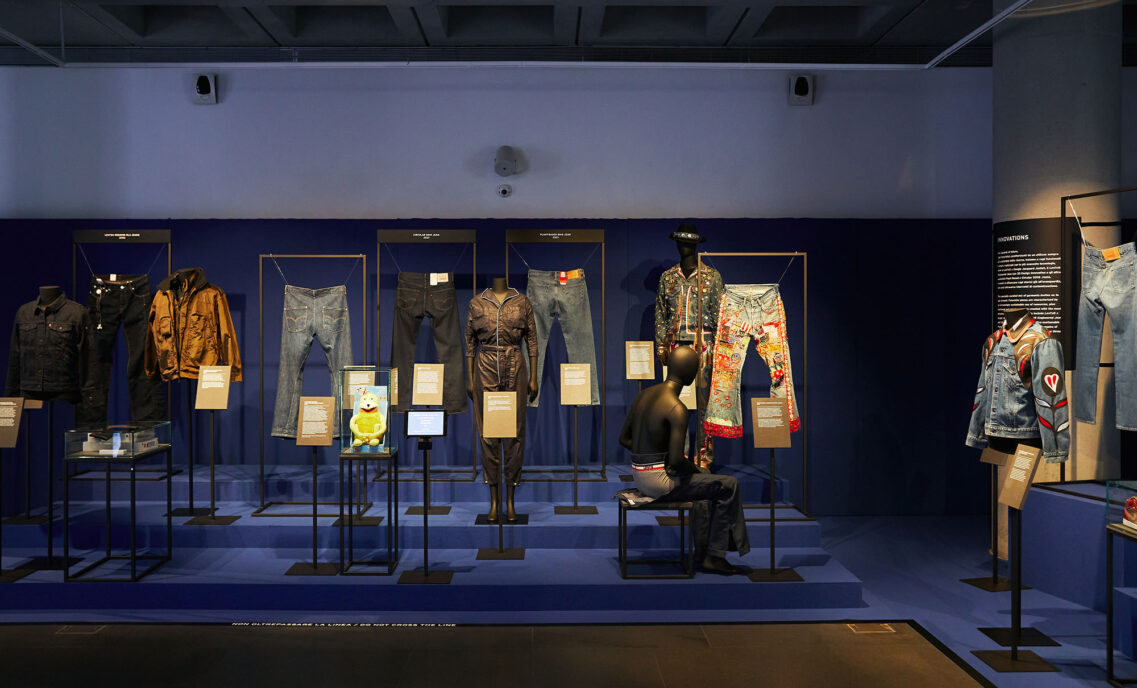This week we celebrated the 141st birthday of an icon – the beloved 501® jean. Soon after we patented rivets for work pants on May 20, 1873, word started to spread about the durability and style of the groundbreaking garment.
On June 28, 1873, the Pacific Rural Press, a magazine devoted to farming and ranching in the West, printed an article about the new patent: using rivets to strengthen the pockets and other stress points on men’s work pants, known back then as “overalls.” It had been granted to Mr. J.W. Davis of Reno, Nevada and Levi Strauss & Co. of San Francisco on May 20. Here’s what the article said about this innovative new style of pants:
“Simple as this device seems, nevertheless it is quite effective, and we do not doubt that this manufacture, of overalls especially, will become quite popular amongst our working men, as the overalls are made and cut in the style of the best custom made pants. Nothing looks more slouchy in a workman than to see his pockets ripped open and hanging down, and no other part of the clothing is so apt to be torn and ripped as the pockets. Besides it slouchy appearance, it is inconvenient and often results in the person losing things from his pockets.”
These new overalls were, of course, the first blue jeans.
Levi Strauss had been a dry goods wholesaler in San Francisco for 20 years when Davis approached him about his great new system for making sturdy men’s work pants with metal rivets. Davis needed a business partner to mass market his idea, and Levi – Davis’s fabric supplier – agreed to work with him to obtain a patent and get production up and running.
Davis made riveted pants out of white cotton duck material for his customers in Reno beginning in 1871, and after the patent came through two years later Levi Strauss & Co. began to make pants from blue denim in San Francisco.
These first jeans had one back pocket, two pockets plus the watch pocket in front, a strap and buckle on the back of the waistband to cinch the pants in, and buttons for suspenders to hold the pants up. The Arcuate stitching design was there from the beginning, though no one knows why it was first used or what the design was meant to represent (thanks to the loss of our records in the 1906 earthquake and fire).
The denim came from the Amoskeag Manufacturing Company in Manchester, New Hampshire. Their top-of-the-line denim was so famous it was simply called “XX,” and that’s the name we gave to the first jeans. They were given their 501® trademark in 1890.
Patents expire after 17 years, so in 1890 LS&Co. was no longer the only company allowed by law to make riveted clothing. Soon brands such as Stronghold, Boss of the Road, Can’t Bust ‘Em, and later Lee and Wrangler (not to mention all the latest denim brands), jumped on the bandwagon.
But we created this new category of men’s clothing – today called blue jeans – 141 years ago, a fact that no competitor, new or old, can ever dispute.









